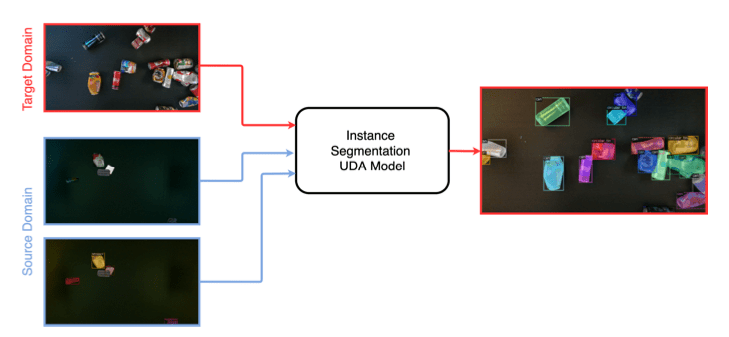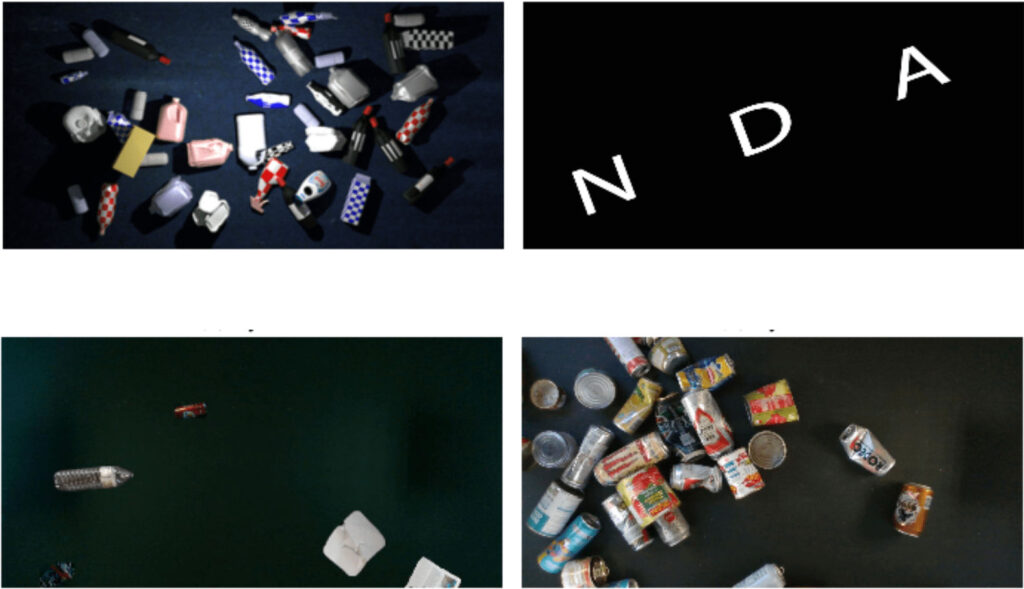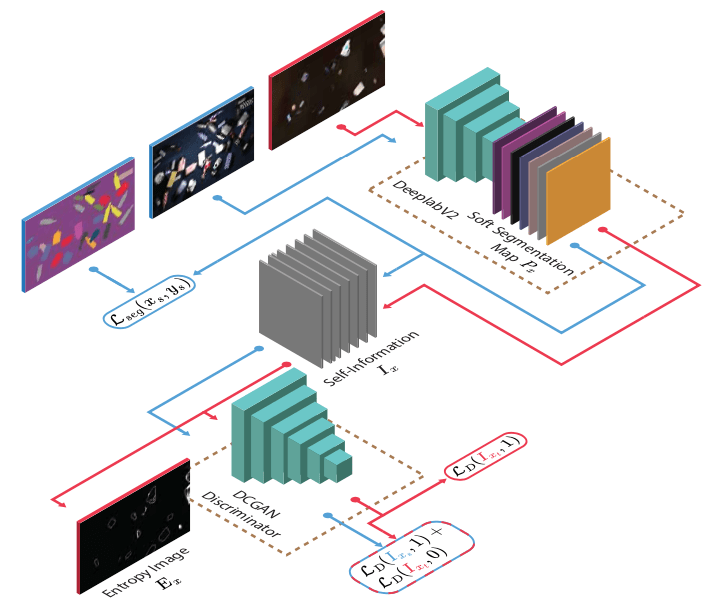The goal of this WasteNet series is to engineer a Deep Learning model that will focus on UDA for the instance segmentation task. As such, there are only two other approaches that are addressing this.
These approaches come with diverse advantages and disadvantages, however, neither of them have open-source code available. The research conducted enables Recycleye to use the model for their industrial application.
Instance Segmentation UDA Training Objective

The overall goal is broken into several objectives:
1. To engineer a simple neural network architecture for instance segmentation UDA task that will be trained on an unlabelled real dataset as well as a labelled synthetic dataset.
2. Apply this model to Recycleye datasets and assess the performance success
3. Apply this model to another dataset that is publicly available and commonly used for UDA tasks, and then compare the performance success to that of Recycleye’s model application.
Deep Learning Datasets

The image above showcases Recycleye’s datasets.

This approach, known as the ADVENT UDA approach, was chosen for the purposes of re-engineering it’s architecture to perform UDA for instance segmentation. The red and blue arrows and symbolise target and source domain respectively.